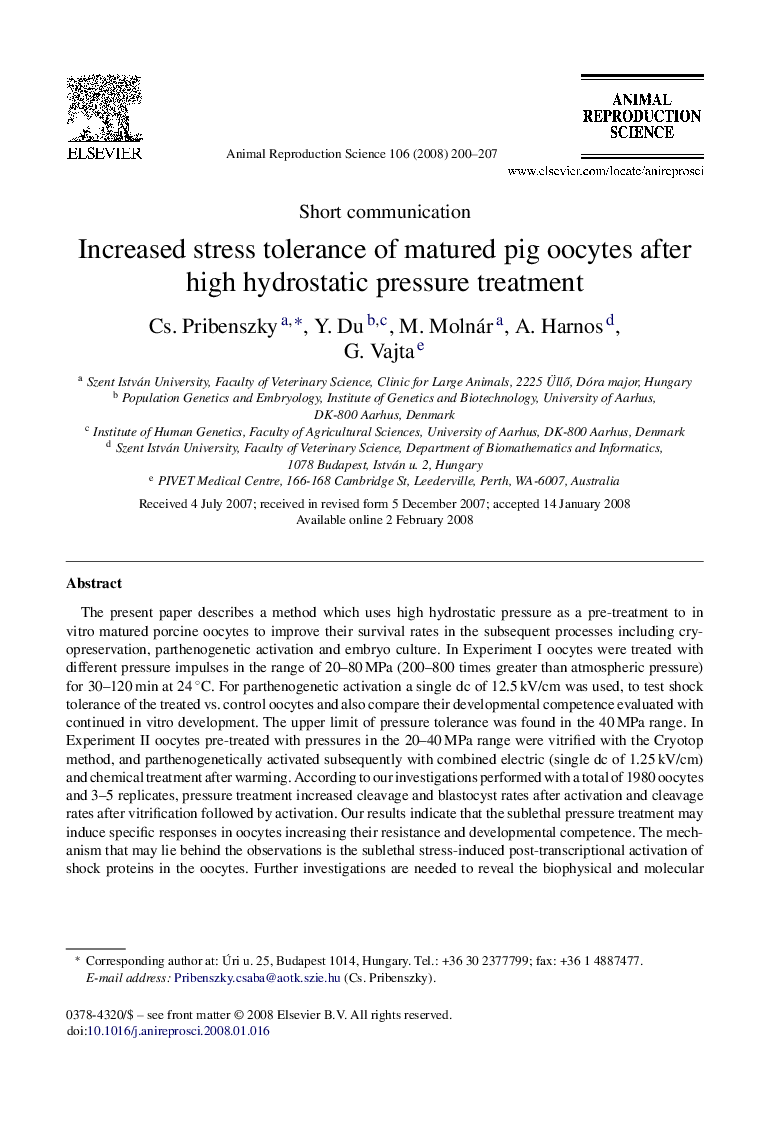| Article ID | Journal | Published Year | Pages | File Type |
|---|---|---|---|---|
| 2074296 | Animal Reproduction Science | 2008 | 8 Pages |
The present paper describes a method which uses high hydrostatic pressure as a pre-treatment to in vitro matured porcine oocytes to improve their survival rates in the subsequent processes including cryopreservation, parthenogenetic activation and embryo culture. In Experiment I oocytes were treated with different pressure impulses in the range of 20–80 MPa (200–800 times greater than atmospheric pressure) for 30–120 min at 24 °C. For parthenogenetic activation a single dc of 12.5 kV/cm was used, to test shock tolerance of the treated vs. control oocytes and also compare their developmental competence evaluated with continued in vitro development. The upper limit of pressure tolerance was found in the 40 MPa range. In Experiment II oocytes pre-treated with pressures in the 20–40 MPa range were vitrified with the Cryotop method, and parthenogenetically activated subsequently with combined electric (single dc of 1.25 kV/cm) and chemical treatment after warming. According to our investigations performed with a total of 1980 oocytes and 3–5 replicates, pressure treatment increased cleavage and blastocyst rates after activation and cleavage rates after vitrification followed by activation. Our results indicate that the sublethal pressure treatment may induce specific responses in oocytes increasing their resistance and developmental competence. The mechanism that may lie behind the observations is the sublethal stress-induced post-transcriptional activation of shock proteins in the oocytes. Further investigations are needed to reveal the biophysical and molecular biological background of the findings and to optimize the protocol of pressure pre-treatment in both animal- and human-assisted reproductive technology (ART) to increase the efficiency of in vitro procedures.
